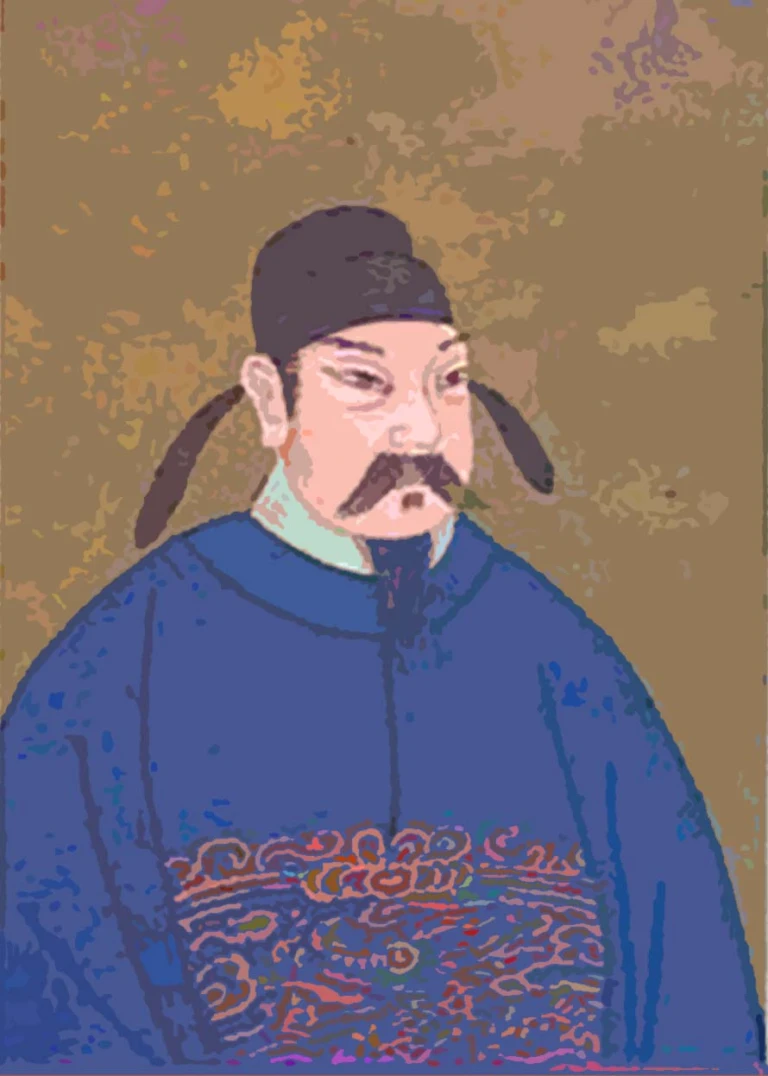Clothes make the man is an old saying whose origin is clouded in uncertainty. Color also plays a role. Anyone who studied Roman history knows that purple was worn by Roman magistrates. And later Byzantine emperors adopted purple as the royal color.
The color of the clothing in imperial Tang China also indicated rank. In the Tang dynasty, the emperor would often wear purple. Why not, it was the color of the magnificent iris, the harbinger of Spring, the sign of a glorious Summer.
During Emperor Gaozong’s reign (649-683) it was decreed that only the emperor could wear Imperial Yellow, the reddish-yellow color of the sun, for as Confucius said:
“There cannot be two suns in the sky, nor two emperors on the earth.”
Color Makes the Man
Purple was used by officials above the third grade, crimson for officials above the fifth grade; dark green to the sixth grade, light green to the seventh grade; dark cyan to the eighth grade, and light cyan officals of the lowly ninth grade.
The common people and peasants wore dark clothing or simply left it uncolored.
The Song of the Pipa Player
All of this became relevant to me as I was reading the last two lines of Bai Juyi’s hauntingly beautiful poem, The Song of the Pipa Player. At first, it is the story of two friends parting. It then takes a turn, when the music of a Pipa, a stringed instrument, is overheard. The player is a girl, both mysterious and beautiful. Bai and his parting friend are mesmerized by the notes:
Like tinkling pearls poured on a jade plate,
Like a nightingale’s song hidden amongst the flowers,
Like a brook babbling along the bank.
Their parting is delayed, the wine flows on, as does the mournful music until that is left is silence. A silence that speaks that her heart is empty.
The poem closes with this couplet.
Who cries the loudest? In Sima, Jiangzhou, look to the wet green shirt.
座中泣下誰最多 江州司馬青衫濕
Zuò zhōng qì xià shuí zuìduō, jiāngzhōu sīmǎ qīng shān shī.
Spoiler alert. The man in Sima Town in Jiangzhou was Bai Juyi himself.
Much Ado About Color
The year was 815.
Bai Juyi had recently ended his mourning period after the death of his mother. He returned to the imperial court in Chang’an as a low level assistant to the tutor of one of the imperial princes. Then a few intemperate remarks sent him packing to Sima Town in Jiangzhou, today’s Jiujiang in Jiangxi province.
Lest you think I am going on too long about color, consider this. Bai Juyi learned his place, pale green never talks about purple.
Bai Juyi would, in time go on to become governor of three Chinese provinces and wear purple. Remembering his humble origins, he would eventually retire to Xiangshan, write and meditate in the Buddhist tradition, and take the name, the Hermit of Xiangshan.
He died in 846, at the age of three score and four.









